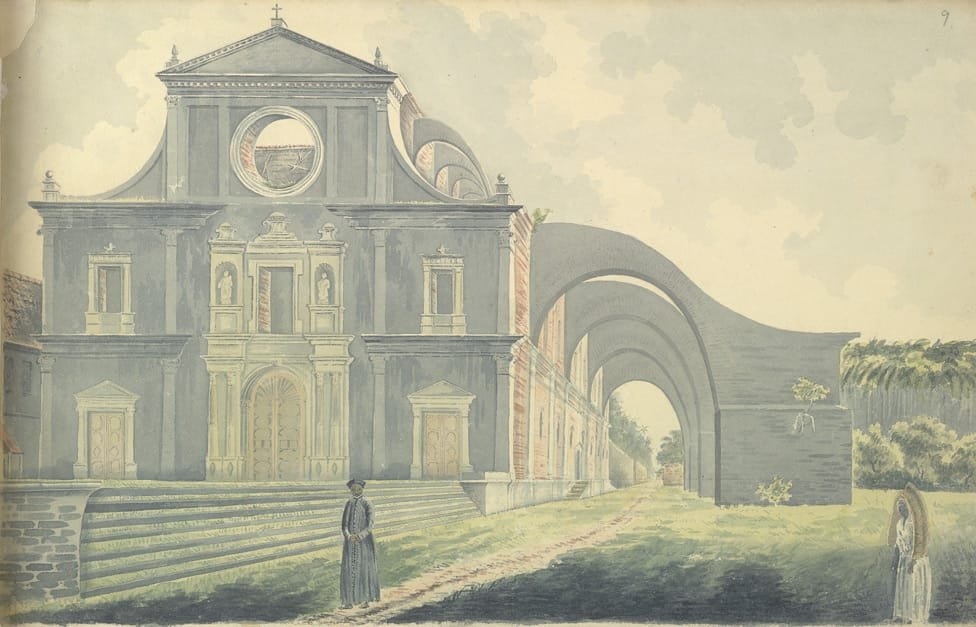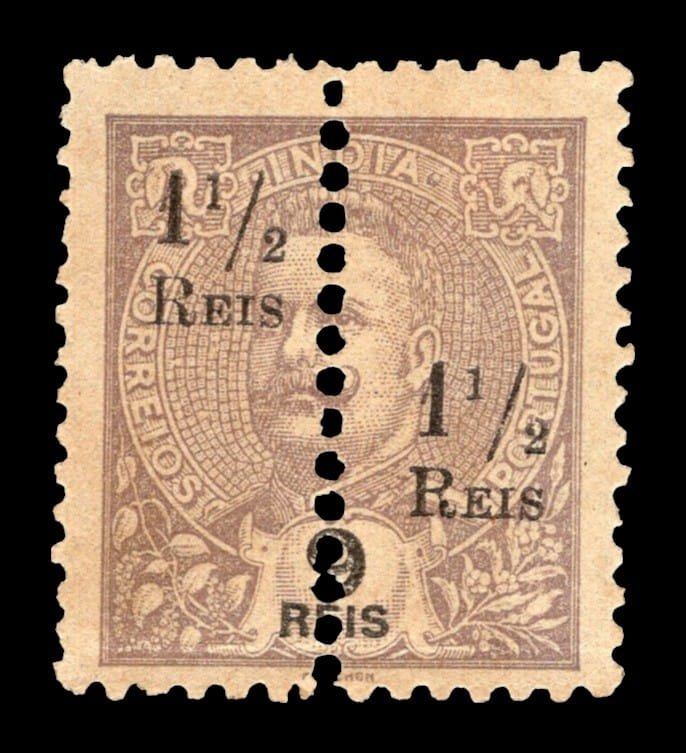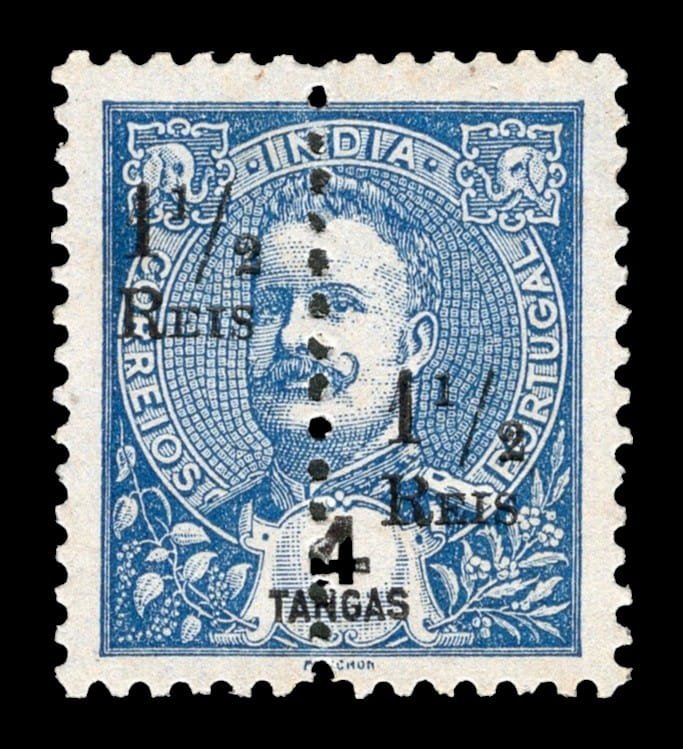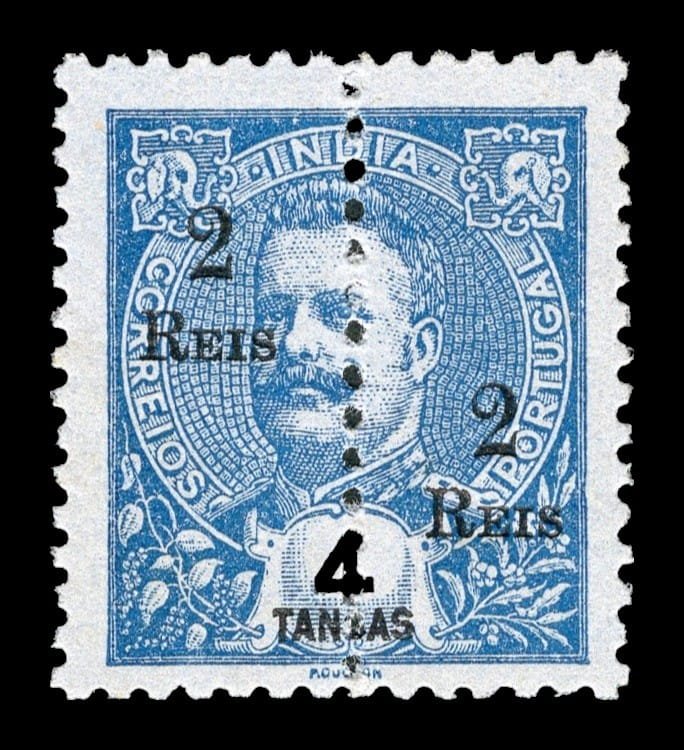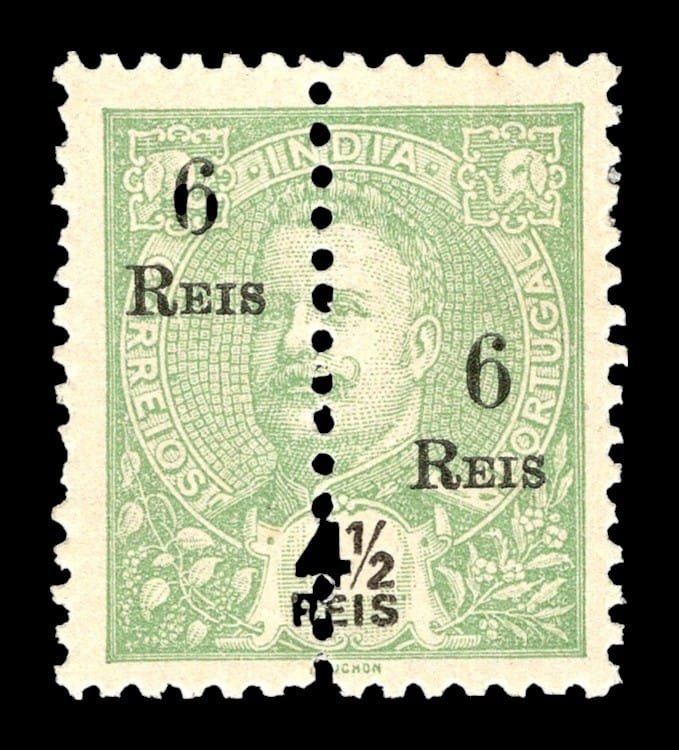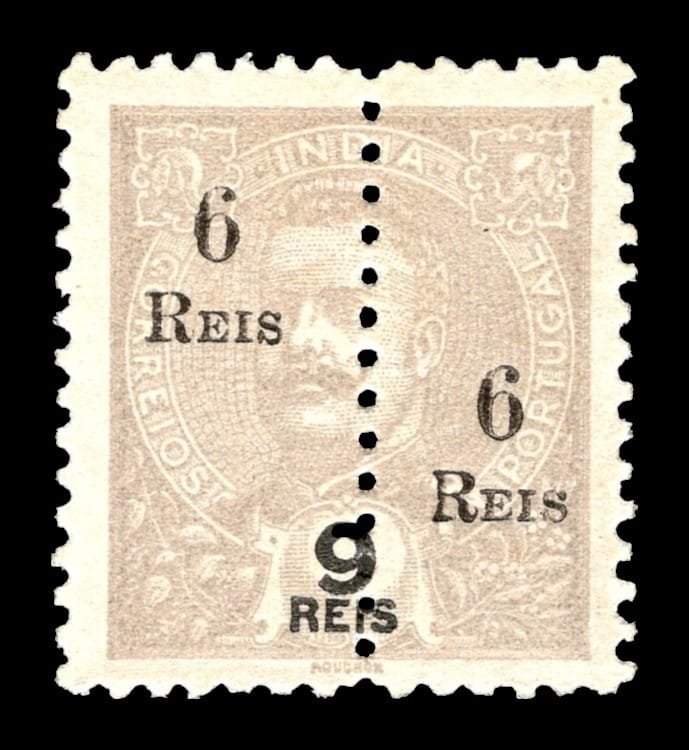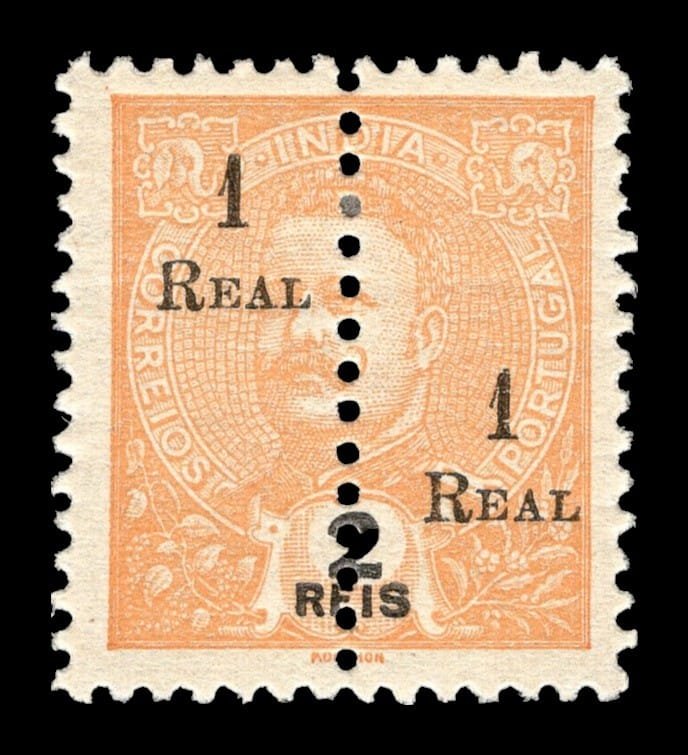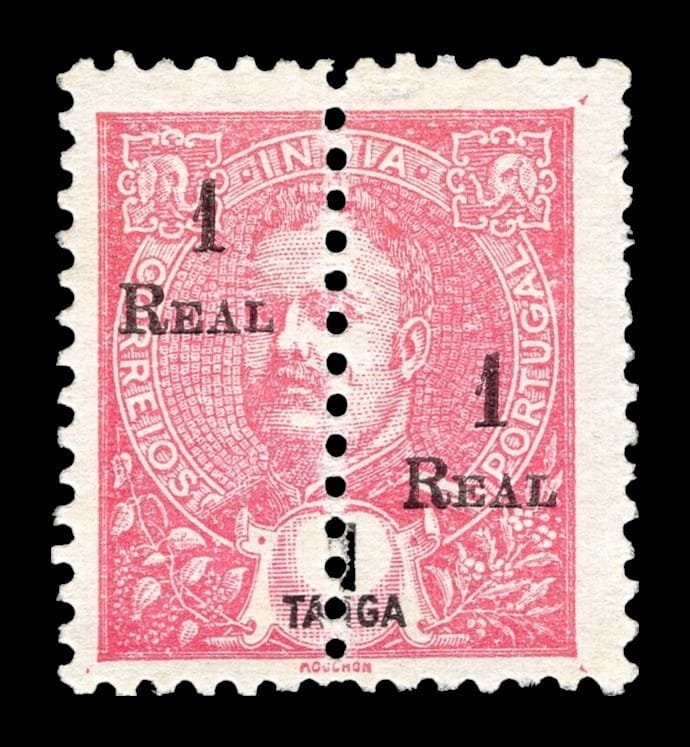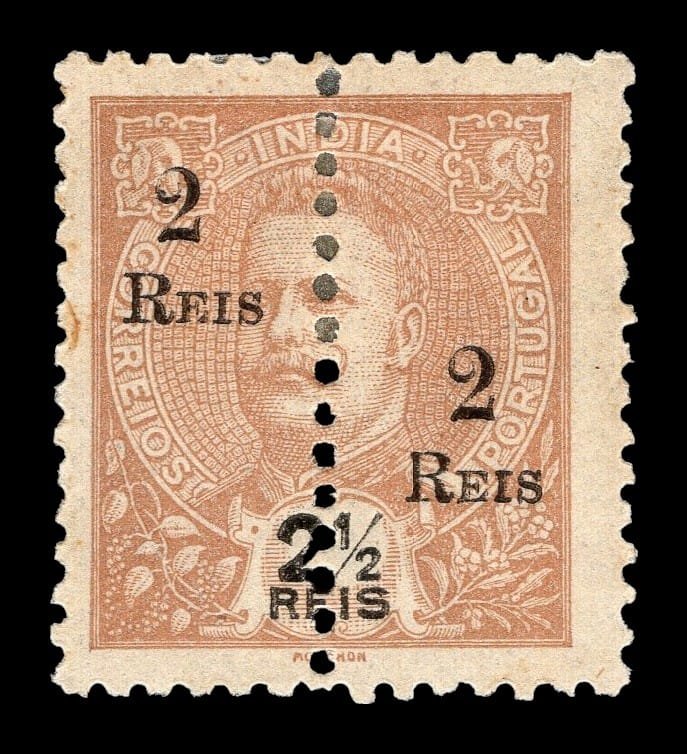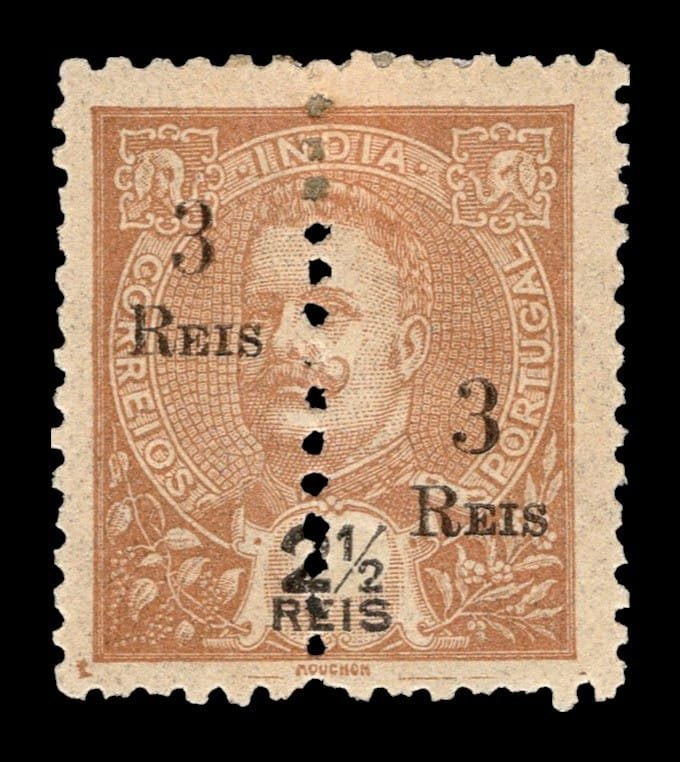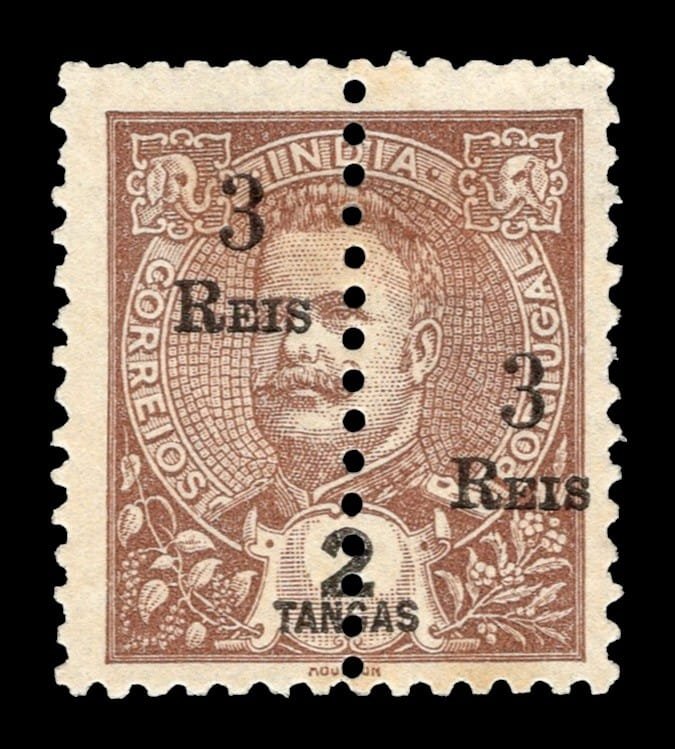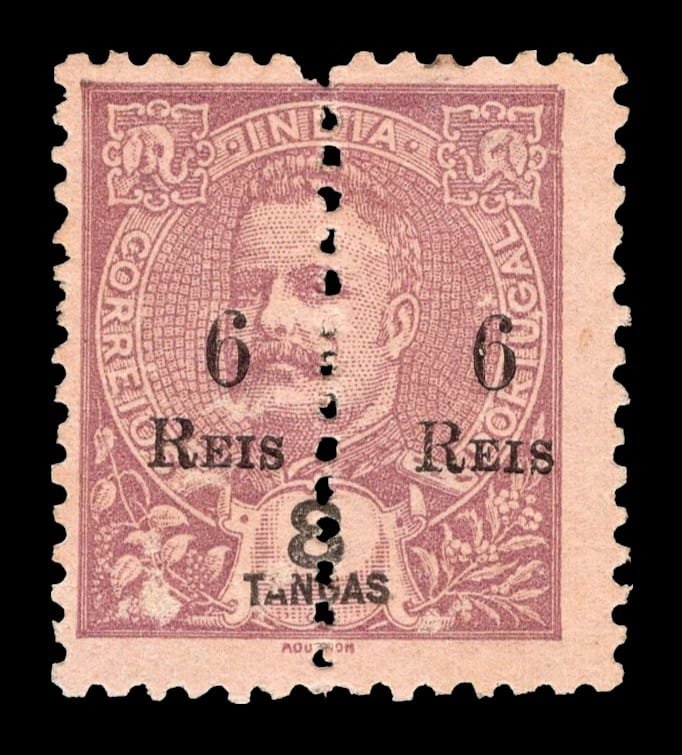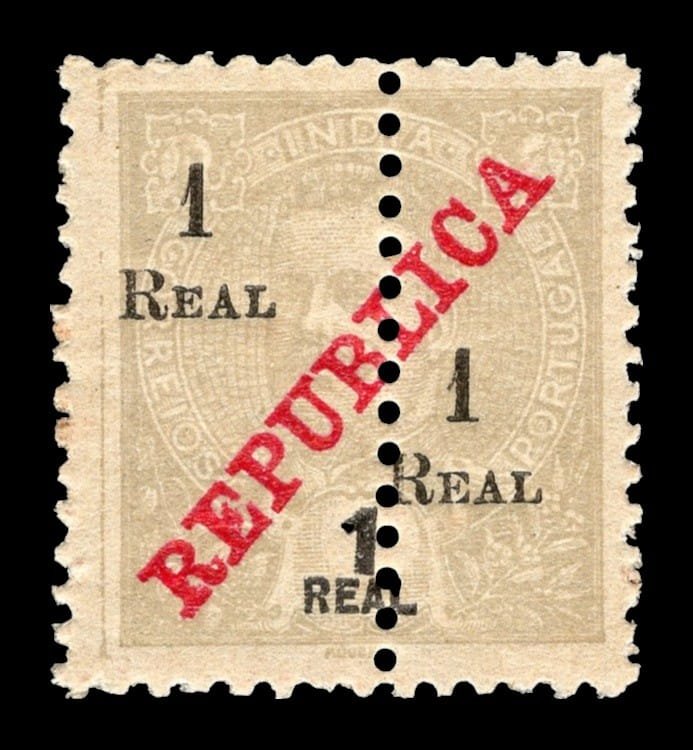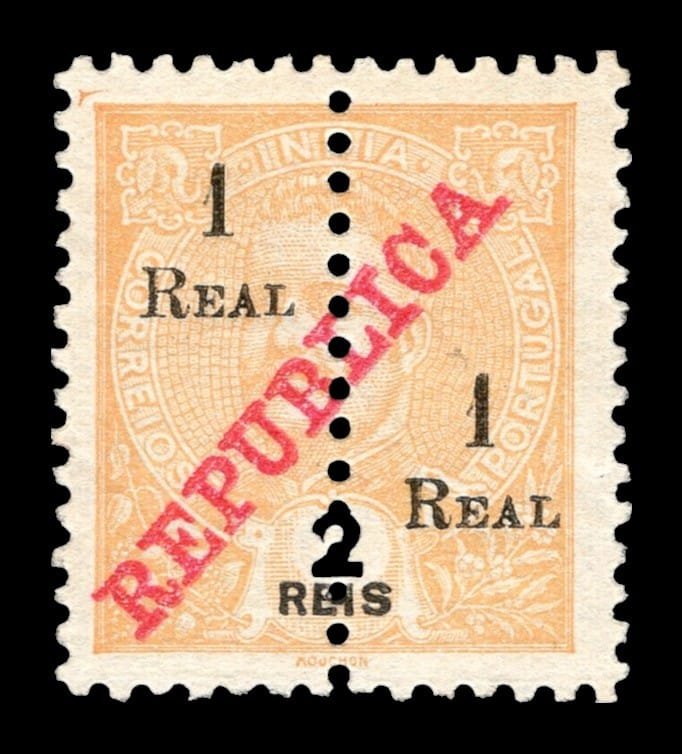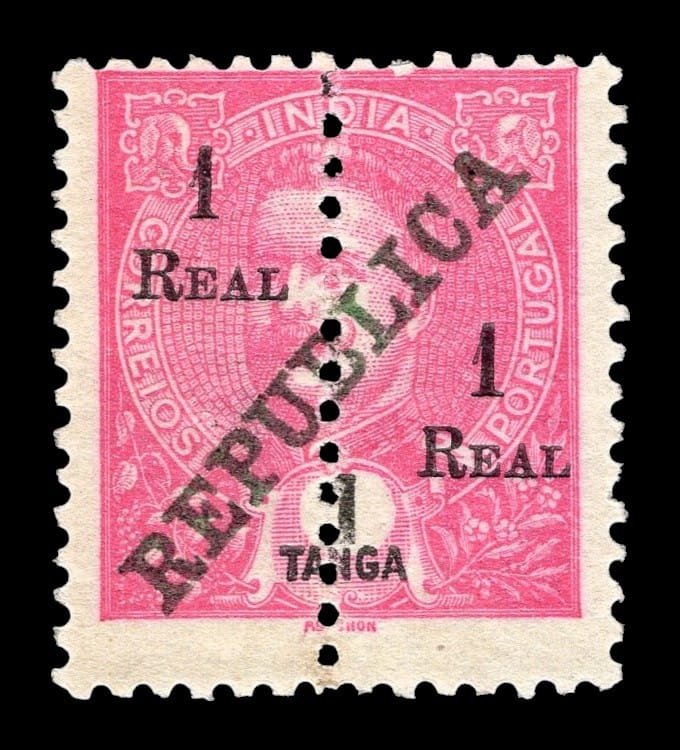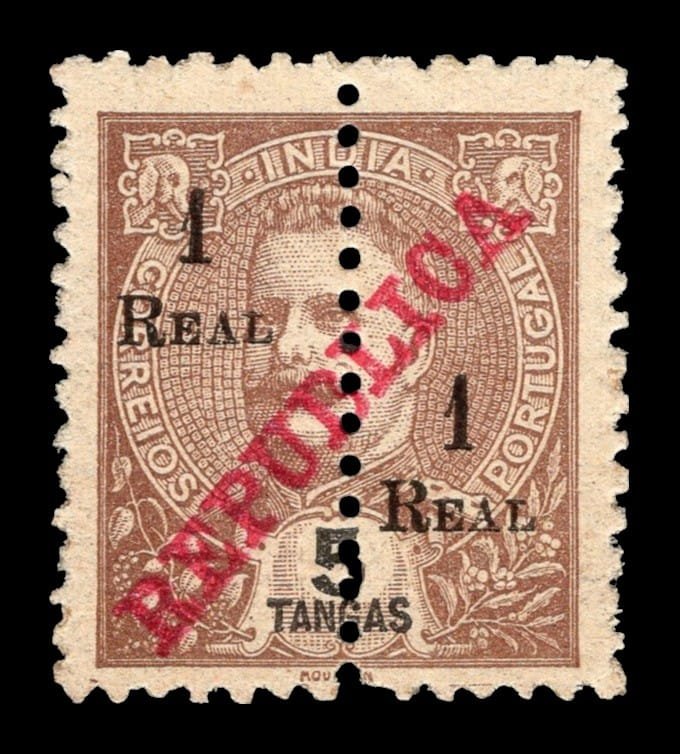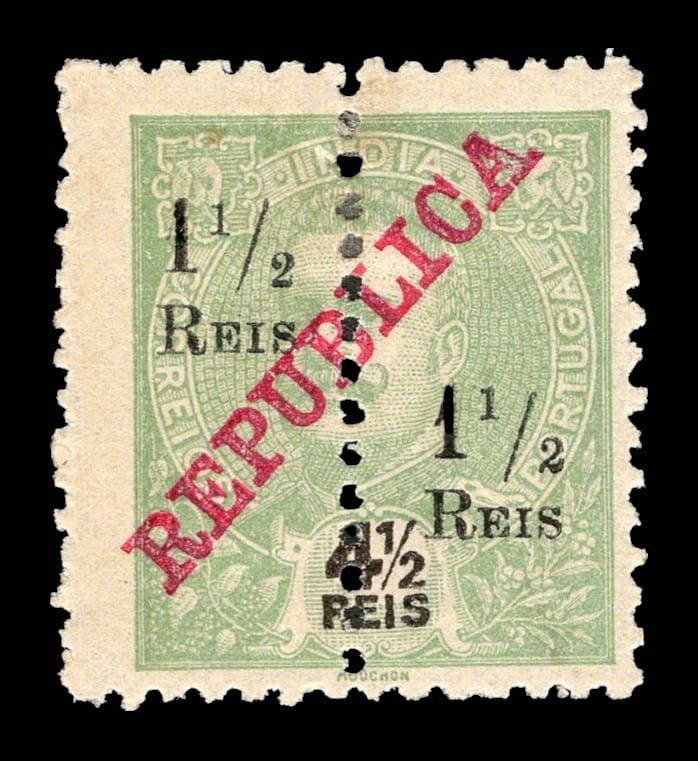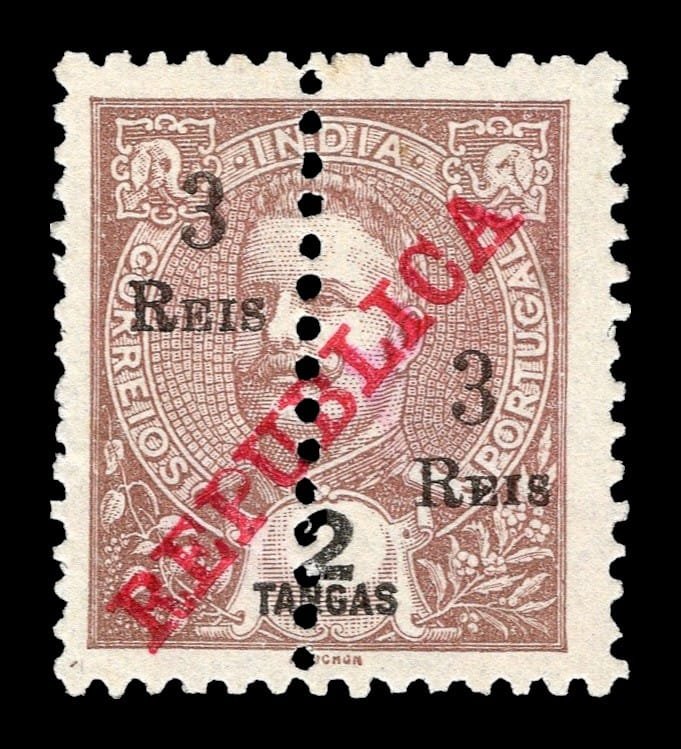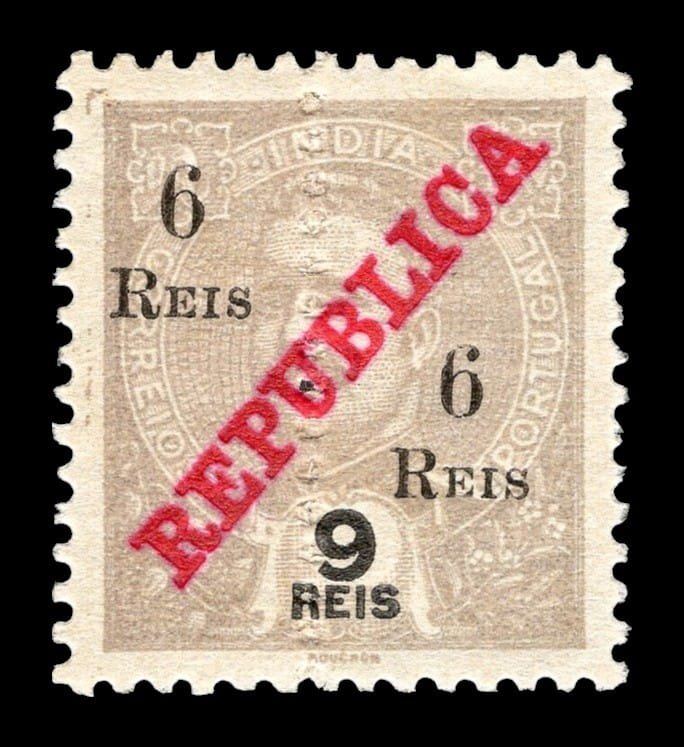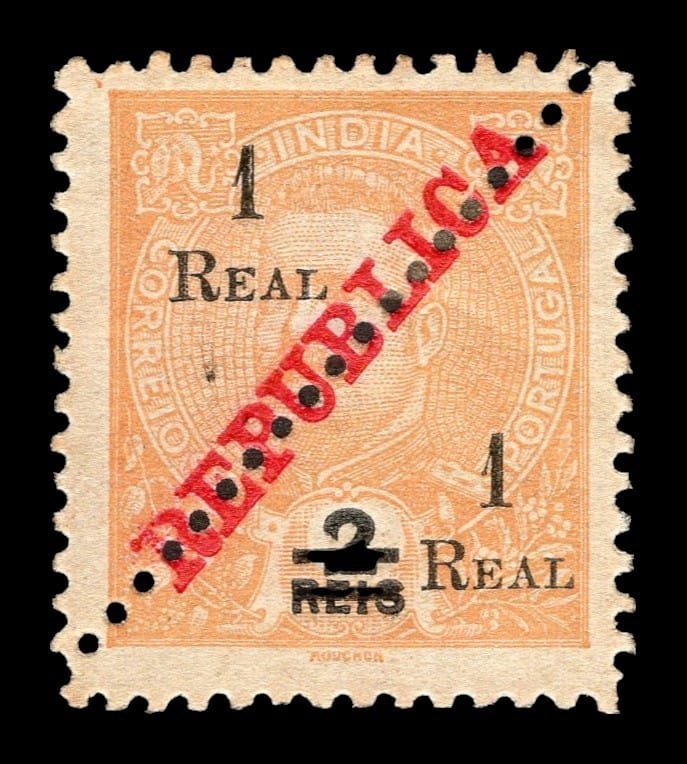India Portuguesa
Portuguese India – Bisected Stamps
1911-13
Around 1911, Portuguese India faced a shortage of lower denomination stamps, particularly values needed for local and inland postal rates. This shortage was due to delayed shipments from Lisbon, combined with rising local postal demands. Rather than suspending postal operations, the authorities in Goa authorised an unusual but effective stopgap: cutting higher-value stamps diagonally in half and using each half as a lower-value stamp.
Typically, 1 Tanga or 2½ Tanga stamps were bisected diagonally, resulting in two ½ Tanga or 1¼ Tanga units respectively. These bisected halves were then accepted as valid postage, usually when affixed to envelopes along with other full stamps. In most cases, they were postmarked by the local post offices, making them postal-authorised and legitimate, though unofficial in a traditional philatelic sense.
The bisected stamps were mainly used between 1911 and 1913, during the tail end of King Manuel II’s reign and into the early years of the Portuguese Republic, after the monarchy was abolished in 1910. Most recorded uses are from Goa and nearby areas, though some are found in Daman and Diu.
King Carlos I
Louis-Eugène Mouchon, Casa da Moeda de Portugal
Bisected 1898-1900 Stamps, Overprinted, Definitive, Typographed, Perforation 11½.
1911-13
King Luis I
Louis-Eugène Mouchon, Casa da Moeda de Portugal
Bisected Surcharged 1902 Stamps, Definitive, Typographed, Perforation 12½.
1911-13
King Carlos I
Louis-Eugène Mouchon, Casa da Moeda de Portugal
Bisected Surcharged 1902 Stamps, Definitive, Typographed, Perforation 12½.
1911-13
King Carlos I
Louis-Eugène Mouchon, Casa da Moeda de Portugal
Bisected Surcharged 1903 Stamps, Definitive, Typographed, Perforation 11½.
1911-13
King Carlos I Republica
Louis-Eugène Mouchon, Casa da Moeda de Portugal
Bisected Surcharged 1911 Stamps, Overprint REPUBLICA, Definitive, Typographed, Perforation 11½.
1911-13
All stamp images and content © PhilatelyLife

